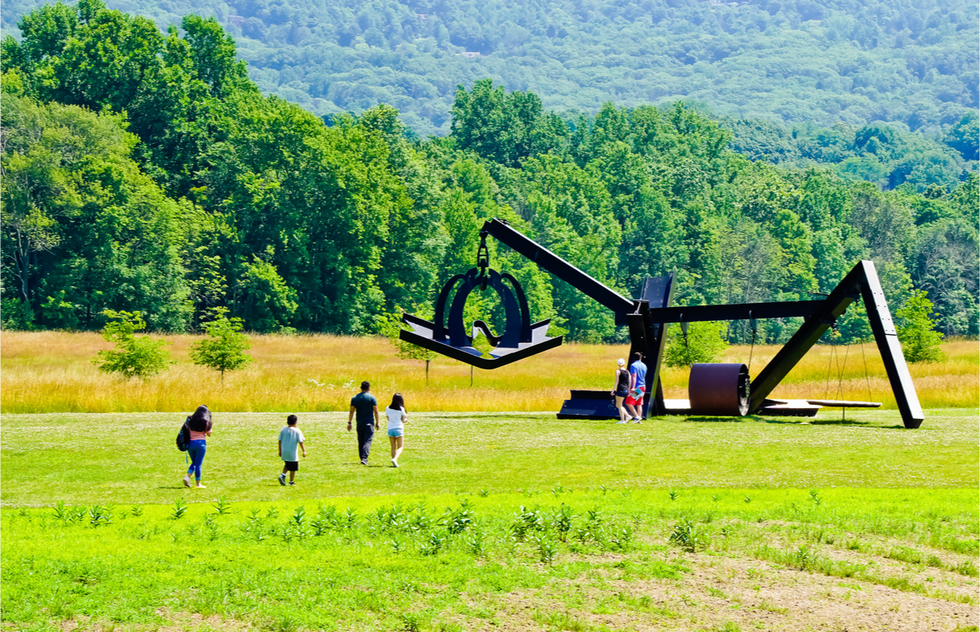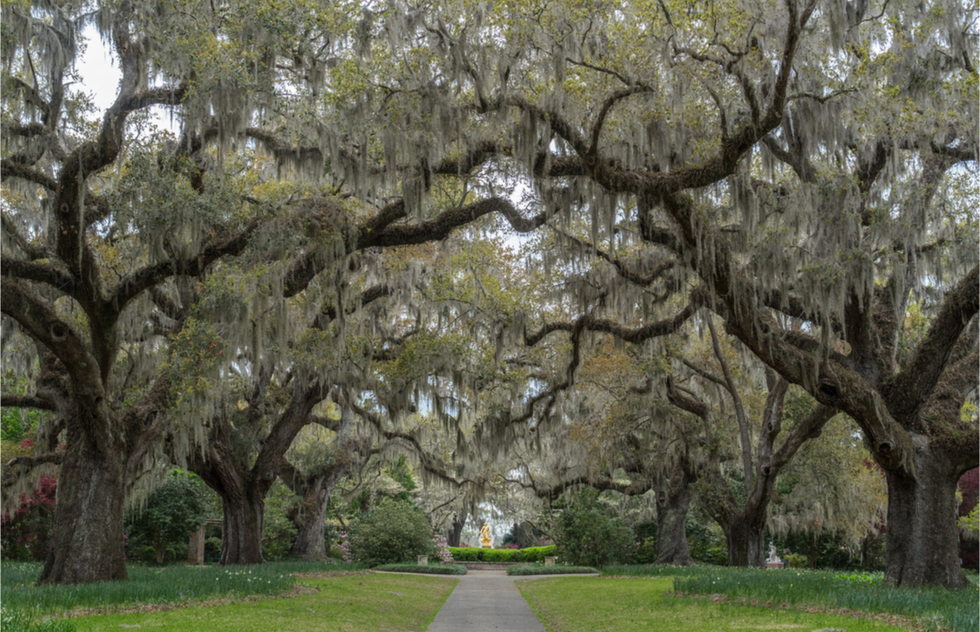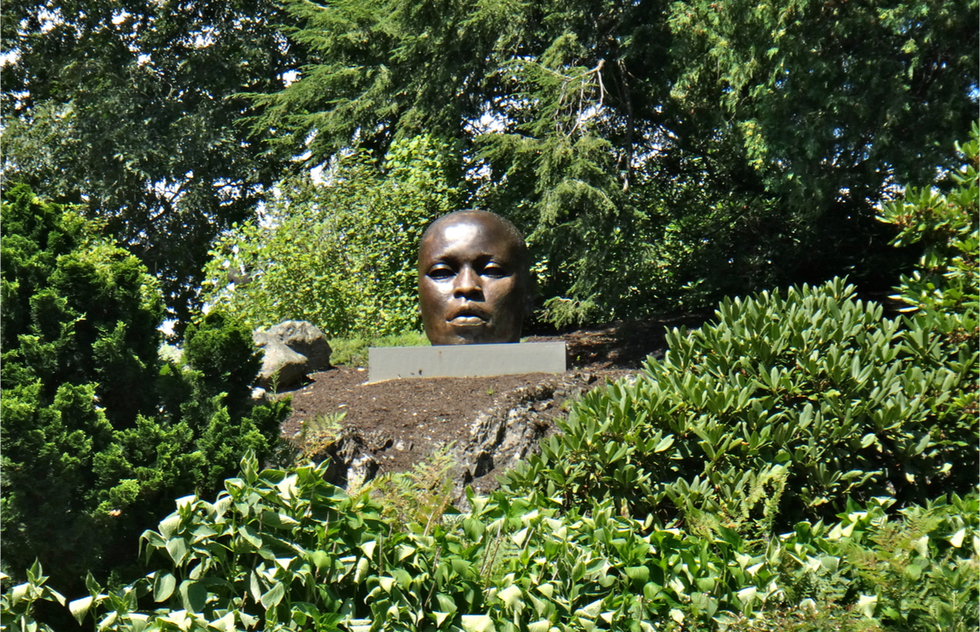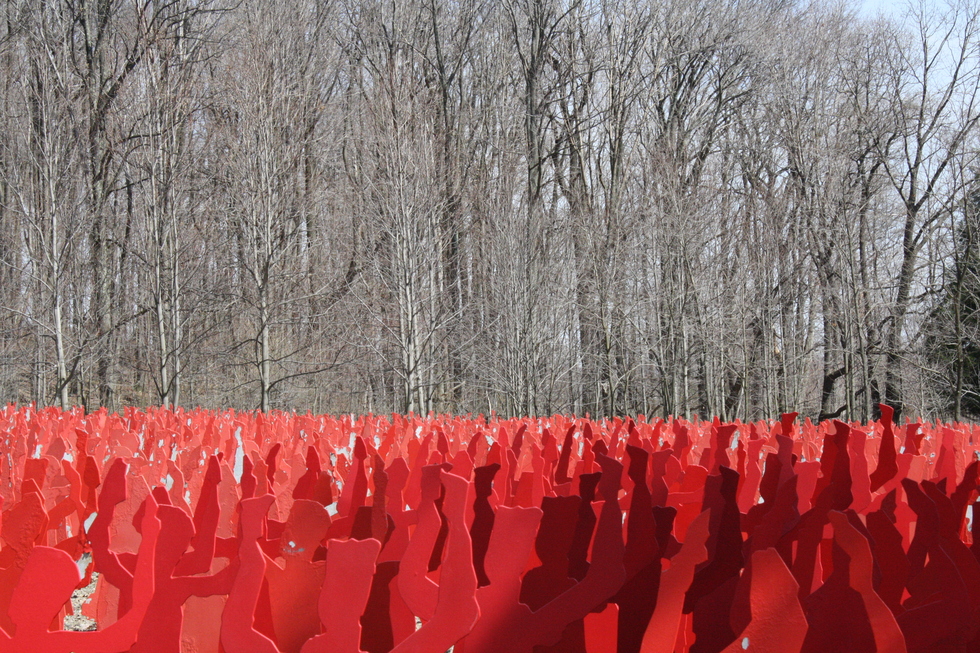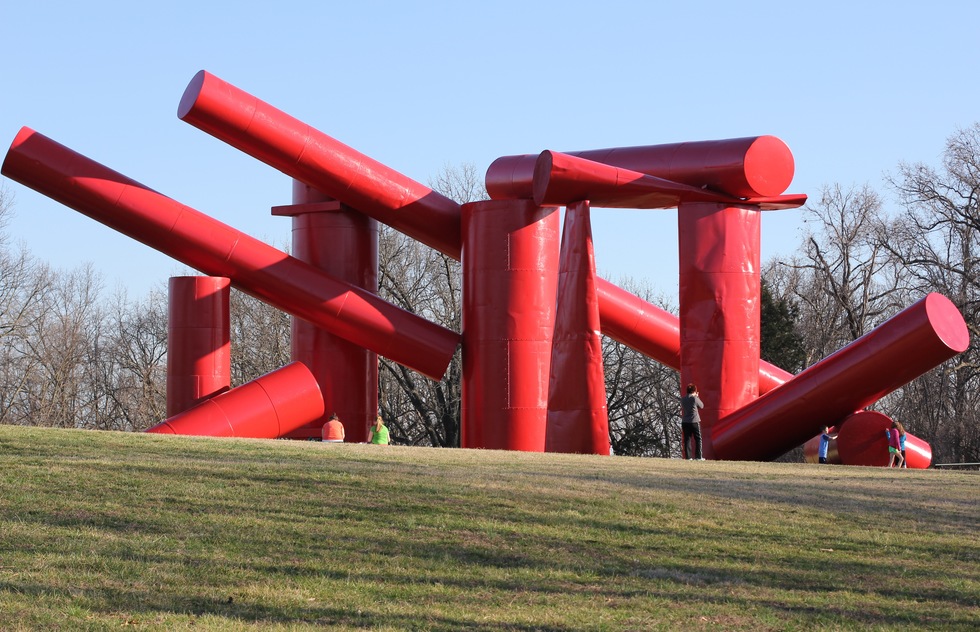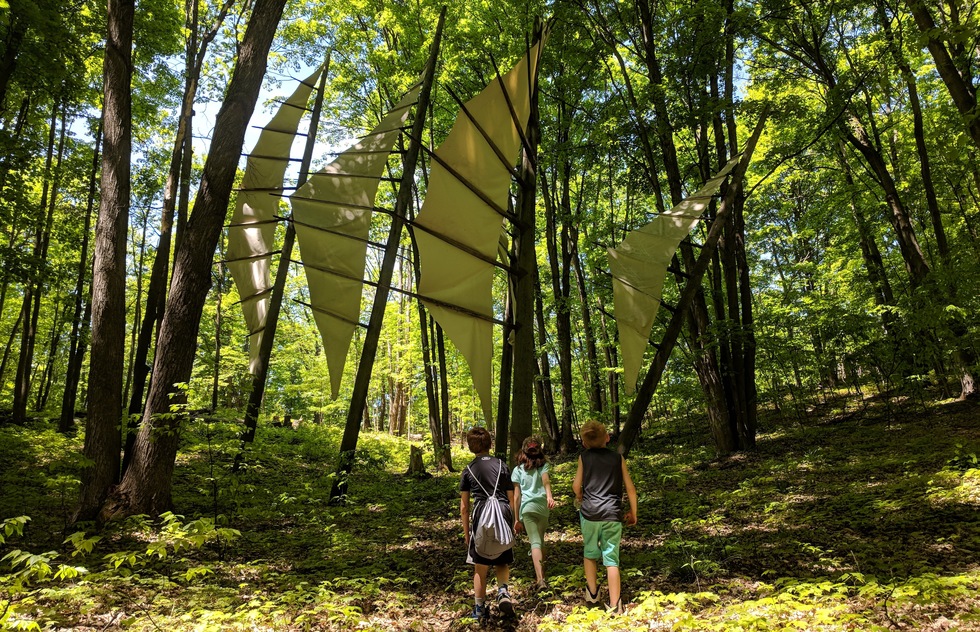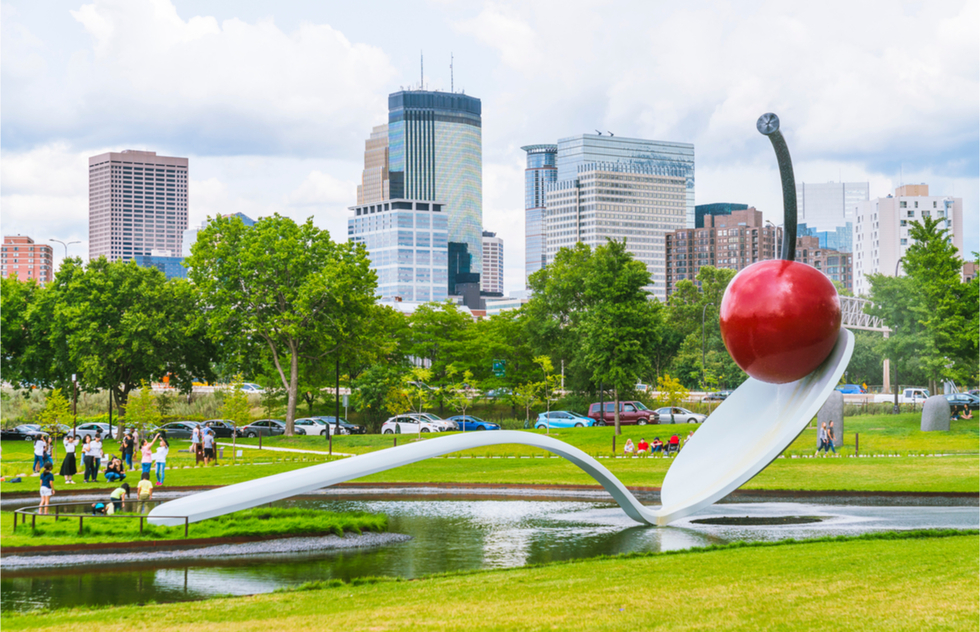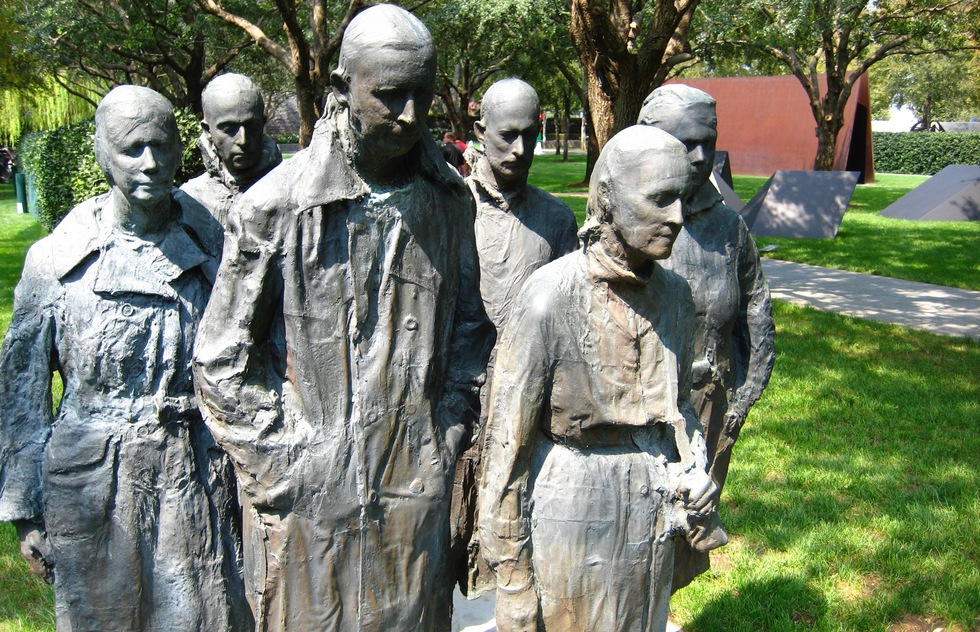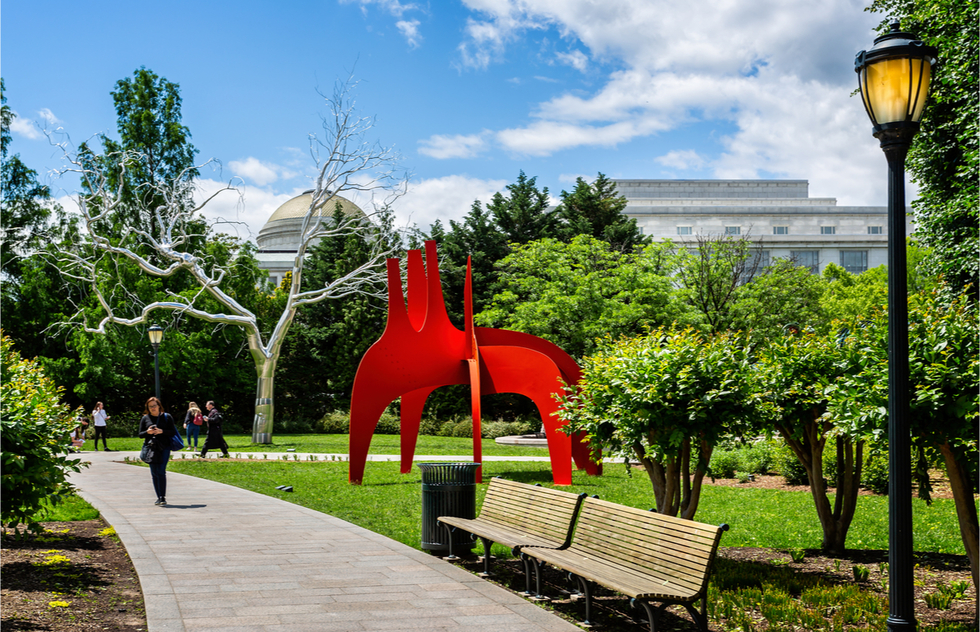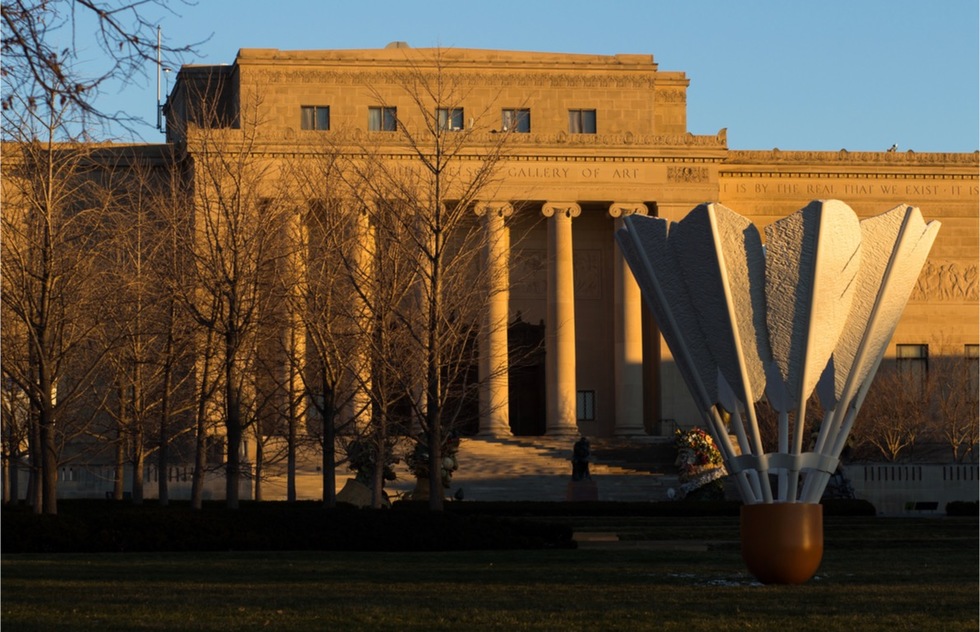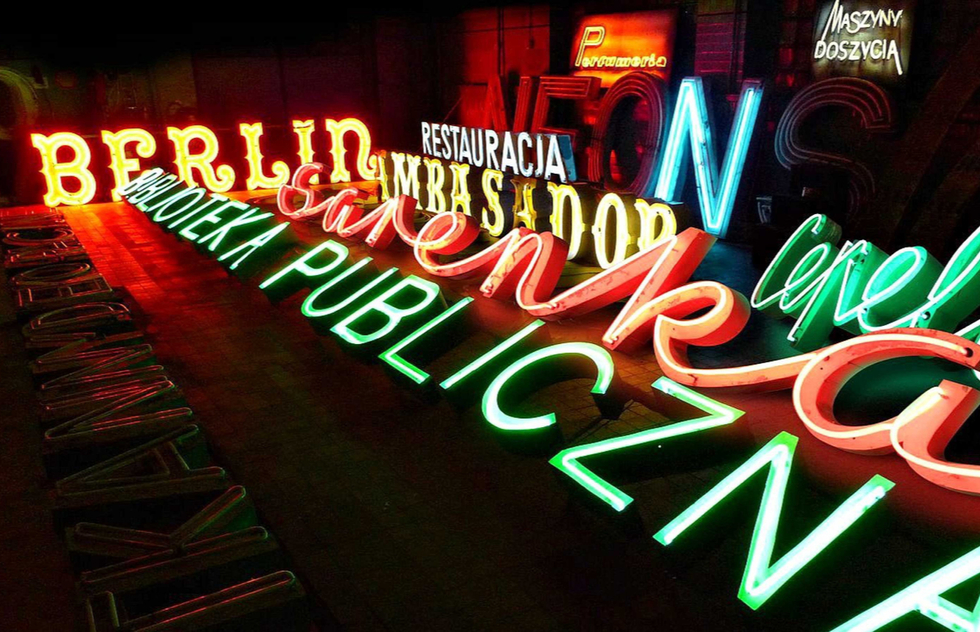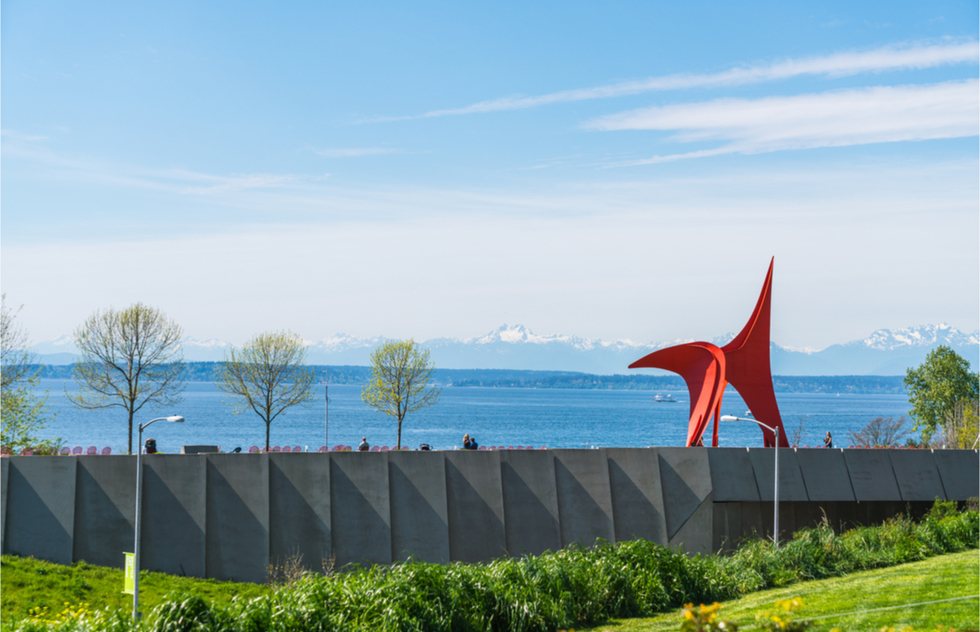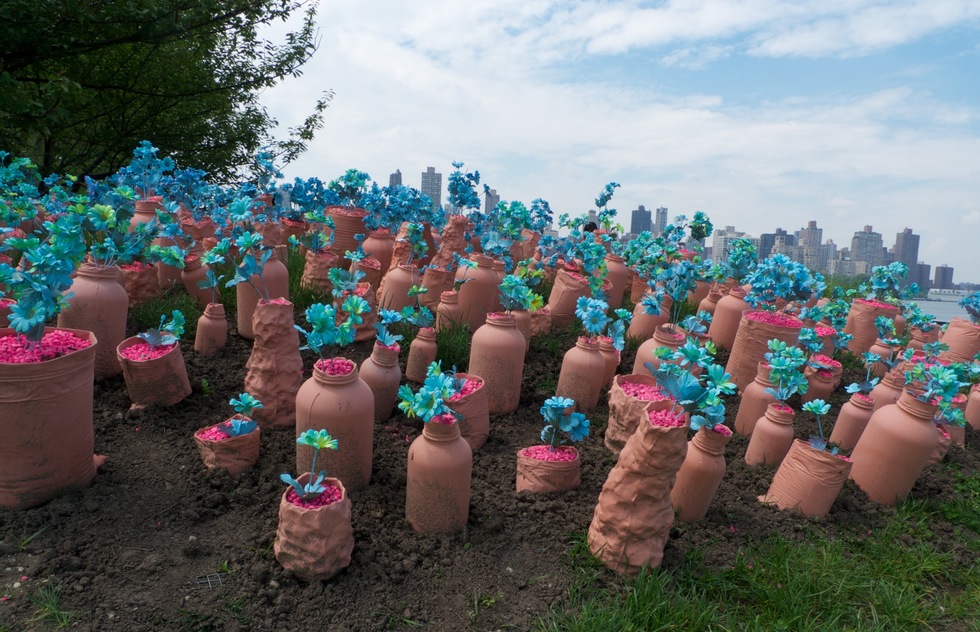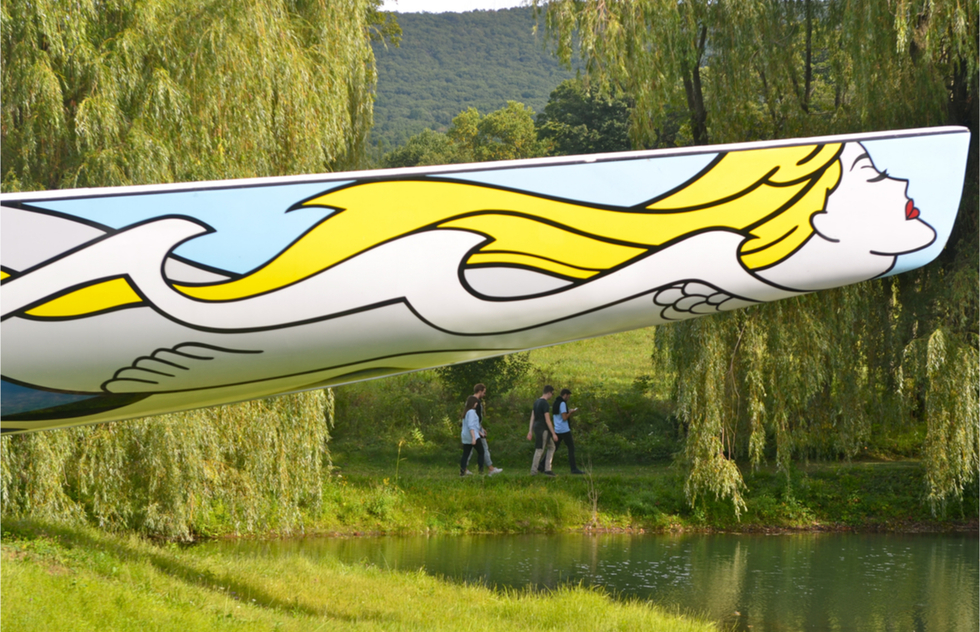Great Art in the Great Outdoors: The USA's Finest Sculpture Parks
By Pauline Frommer"Art evokes the mystery without which the world would not exist," wrote René Magritte, creator of some of the world’s most enigmatic paintings. He’s onto something. There is a space between our daily reality and the eternal that great art can fill. And in troubling times, humans need the solace of those visions more than ever.
Luckily, even though many museums are still closed, most of the USA's great sculpture parks are open. Almost all currently require advance reservations, so visit each facility's website before showing up.
But then: Go! A visit to one of these outdoor galleries is a healing act for the soul.
Pictured: Mark di Suvero's She at Storm King Art Center in Orange County, New York
Set on the grounds of a former rice plantation, Brookgreen Gardens owns the largest collection of figurative American sculpture in the world—1,445 works, including a spectacular rendering of the goddess Diana by Augustus Saint-Gaudens. Everything is displayed outdoors, in gardens laid out in 1931 in the shape of a butterfly by the sculptor Anna Hyatt Huntington and her husband, rail magnate Archer Milton Huntington. The gardens are listed on the National Register of Historic Places.
Along with the art, the site features a Lowcountry Trail that uses sculptures, panels, and archeological objects to tell the story of the enslaved people who toiled in the rice fields. A small zoo houses native species like alligators, foxes, and a range of birds. Nature areas feature towering longleaf pines, Spanish moss–draped live oaks, and marshland.
Nearby Concord was the heart of the Transcendentalist movement back in the 1820s and 1830s, when Ralph Waldo Emerson, Henry David Thoreau, Louisa May Alcott, and other literary luminaries lived there. While there’s not a direct link between that era and this museum, which opened in 1950, deCordova is certainly set on a transcendent site—high on a hill with a small lake and trees that put on a brilliant show come autumn. Originally founded to showcase the talents of New England, the sculpture park now contains work from a wide variety of artists, many of whom take a playful, nature-forward approach that the original Transcendentalists would have appreciated. Standouts are Jim Dine’s statues of big black hearts and Christopher Frost’s jaunty metal top hat, titled A Mile From Any Neighbor From Walden.
Pictured above: Eternal Presence by John Wilson
Visitors get a potential three-fer at Chalk Hill: They can wander through the octagonal Kentuck Knob, one of Frank Lloyd Wright’s most serene and livable homes; explore the woodsy attached sculpture park; and then travel to Wright’s most famous house, Fallingwater, a 40-minute drive away. But don't give Kentuck Knob short shrift. The house's current owner, Lord Peter Palumbo, has filled the grounds with the crème de la crème of modern British sculpture—a rare assemblage in the U.S. Each piece was created specifically for this site by such big names as Wendy Taylor, Andy Goldsworthy, Anthony Caro, and Caro’s protégé Phillip King. Pictured is a piece called The Red Army by Ray Smith. A large chunk of the Berlin Wall is also on display at the site.
Some 70 works dot Laumeier’s 105 acres, making this one of the largest urban sculpture parks in the nation. Most of the pieces are big, too, including a seminal work called The Way (pictured), created by Alexander Liberman from 18 salvaged oil tanks; a massive eyeball (Eye by Tony Tasset) that’s Instagram bait for most visitors; and the towering Man with Briefcase at #2968443 by Jonathan Borofsky. The park continues to expand its collection, adding works by Nigerian-born artist Odili Donald Odita in August 2020.
The Art Park commissions works that reflect Michigan’s history. That might mean billowing sails strung through the branches of a tree in a nod to the maritime history of the surrounding Great Lakes, a climbable fort harking back to the early fur traders who settled the area, or David Barr’s saw-like sculptures referencing the state's logging industry. Barr is not only the most represented artist in the park; he founded the place in 1995 to “connect man to nature, nature to man, and transcend those boundaries without disturbing the balance.” The art is set along a 2-mile hiking trail system that winds up and down a densely forested 30 acres. A golf cart is available for those with limited mobility.
Pictured above: Five Needles by Michael McGillis
To many, Claes Oldenburg and Coosje van Bruggen's Spoonbridge and Cherry sculpture (pictured) is Minneapolis's unofficial mascot. Photos that use tricks of perspective to make it look like you’re licking the massive cherry atop the even bigger spoon are as obligatory as holding-up-the-Leaning-Tower selfies in Pisa. But after you've had your yuks, don't forget to check out the many other world-class works of art here, including important pieces by Alexander Calder, George Segal, Judith Shea, and Roy Lichtenstein. In 2017, the garden was extensively renovated and now features a variety of native grasses and trees.
The Nasher is like a walk-through cram session for an Intro to Modern Art final exam. Inside and in the garden are works by Rodin, Picasso, Brancusi, Koons, Calder, de Kooning, Giacometti, Matisse, Serra, and other masters. Pictured is George Segal's moving Rush Hour. The museum’s building was designed by Renzo Piano and is an artwork unto itself. But gravitate to the grounds for an uncrowded, intimate experience in which the sculptures feel like they're in conversation with one another.
In the winter months the heart of this garden holds a delightful skating rink, meaning you can stroll, hot cocoa in hand, from the ice and see Louise Bourgeois' sensuous Spider with a light dusting of snow. The garden also holds a joyous Chagall mosaic, a variation by Robert Indiana on his iconic LOVE statue (this one is called AMOR), and 17 other important works of modern art. The garden is one of the most serene places in a city that’s often sorely lacking in calm spots for quiet contemplation.
It’s not a major sculpture garden if there aren't everyday objects rendered in giant size by Claes Oldenburg and Coosje van Bruggen. Here, there's a quartet of mammoth shuttlecocks, presumably dropped by 200-foot-tall country club members during a game of badminton. The Nelson-Atkins Museum's outdoor sculpture park was originally named after Henry Moore because it contains a large number of bulbous works by that artist. His pieces have since been joined by a fanciful glass labyrinth by Robert Morris as well as sculptures by Magdalena Abakanowicz, Alexander Calder, Mark di Suvero, and others.
We may be stretching the definition of sculpture here, but this outdoor museum is definitely catnip to folks who enjoy both artistry and kitsch. Founded in 1996, the main outdoor gallery, called the Neon Boneyard, holds more than 200 classic Las Vegas signs, some of which used to adorn the biggest casinos in town, like the Stardust and the Algiers. Though you can wander through on your own, it's best to take a tour because, as Frommer's EasyGuide to Las Vegas author Grace Bascos points out, the guides are “freakishly knowledgeable” about the city’s design history. Visit at night when the signs are lit.
Every sculpture park on this list (with the exception of the Neon Museum) sits amid a beautiful natural setting. But Olympic Sculpture Park raises the bar with its sweeping views over Elliott Bay and its pleasantly wild-feeling little beach. The monumental sculptures complement the view in both directions. If you stand in just the right spot, Alexander Calder’s Eagle frames the Space Needle perfectly. There are also notable works by Louise Nevelson, Roxy Paine, Richard Serra, Louise Bourgeois, Mark di Suvero, and Beverly Pepper.
In 1986, famed sculptor Mark di Suvero headed a coalition of Queens citizens to transform an illegal dumping site in New York City into this park. It’s quite different from the other gardens on this list because the park is run as an "open studio" for sculptors. None of the pieces on view are permanent. Part of the fun of visiting is watching sculptors at work, often on monumental works—and you’ll see what sweaty toil sculpture-making can be. Over 1,000 artists have created temporary exhibits here over the years. Additionally, the park often hosts outdoor dance, music, and theater performances with the city's waterfront as backdrop.
The largest sculpture park in the United States, Storm King covers some 500 acres and several distinct ecosystems—woodlands, meadows, and lakes among them. The prestigious site encompasses works by numerous 20th-century art stars, including Maya Lin, Isamu Noguchi, Henry Moore, Alexander Calder, Richard Serra, Andy Goldsworthy, Anthony Caro, Louise Bourgeois, Sol LeWitt, and David Smith (who is represented with 13 pieces). In addition to its permanent collection, Storm King hosts one- and two-year long special exhibits. In 2020, those included sculptures by Kiki Smith, Martha Tuttle, and Mark di Suvero.





